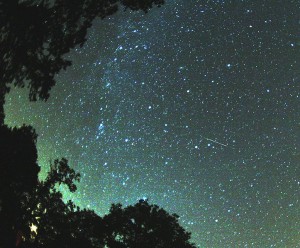In Romagna, and Italy in general, the night of August the 10th is known as la notte di San Lorenzo, the night where, looking up into the night sky you can see the ‘tears of st. lawrence’, or ‘shooting stars’ depending upon where you are placed on the romantic/mystic axis.
The weather forecast this year, though, is looking a bit grim for Monday night, with rain and cloud cover expected throughout most of Italy (a brief cold spell moving in, which will hopefully be a distant memory by Tuesday afternoon!).

The Tears of San Lorenzo
The good news, though, is that you can generally view the Perseids, the meteor shower associated with the comet Swift-Tuttle, throughout the summer from mid July, with the greatest activity starting from the 8th of August through to the 14th.
Tradition and folklore have associated the shooting stars with San Lorenzo (St.Lawrence) whose feast day is the 10th of August. The early Christian martyr, patron saint of comedians (thanks to his quip whilst being tortured on a gridiron ‘turn me over, this side is done’), is one of the most venerated saints in the Catholic world, but the Perseids have been seen in the summer sky for at least 2,000 years, pre-dating Lawrence’s death in around 258 A.D. Meanwhile in Greece the Perseids are associated with the transfiguration of Christ, which is celebrated on the 6th of August.
It was an Italian scientist, Giovanni Virginio Schiaparelli, who is credited with first observing that these annual showers of shooting stars coincided with the passing of specific comets.
Back to the practical side of things – if you want to get the best chance of seeing the Perseids your best bet is to take advantage of the cloudless nights this year before and after the 10th of August, and to head away from the bright lights of Rimini’s coastline heading instead towards the hills.